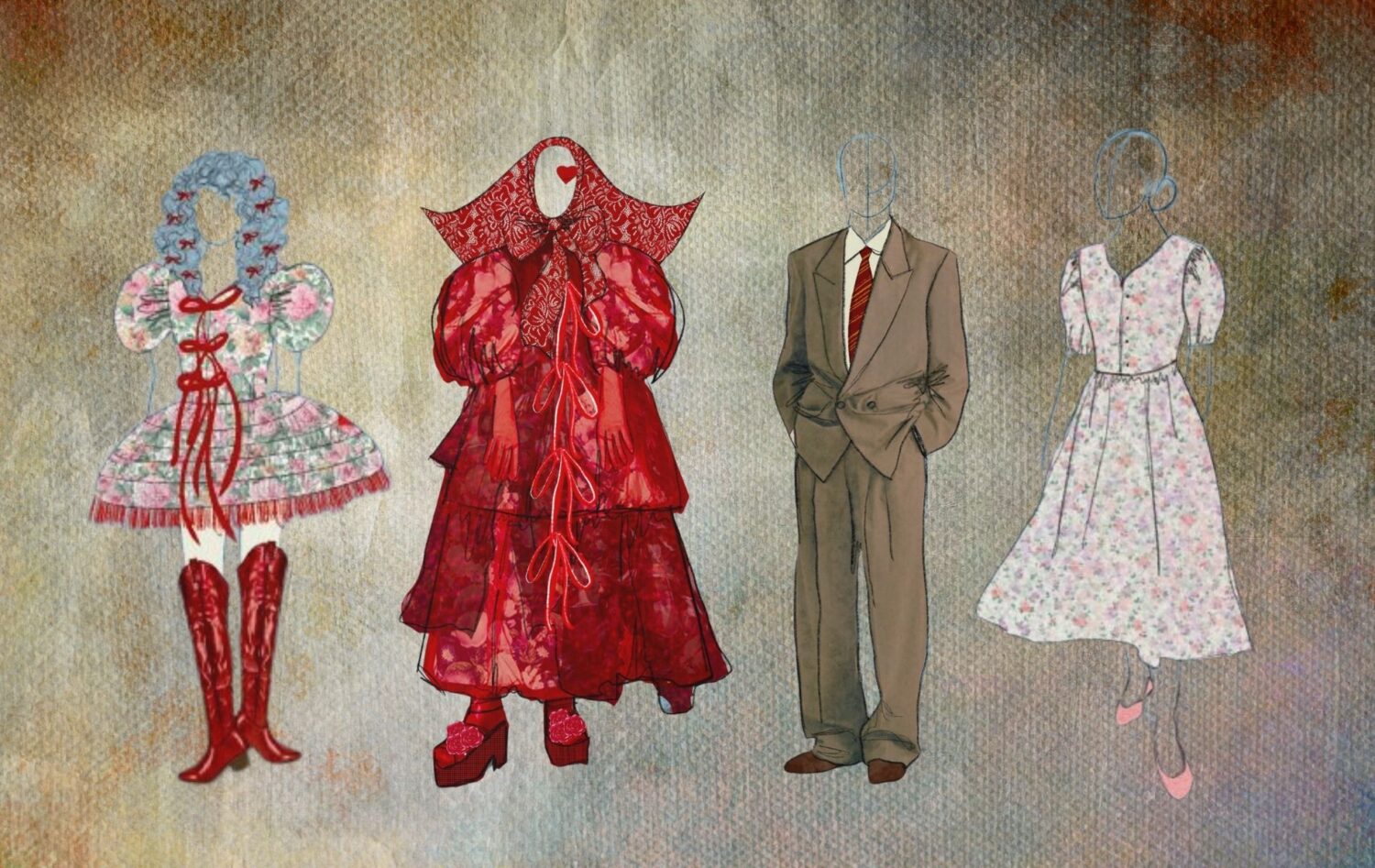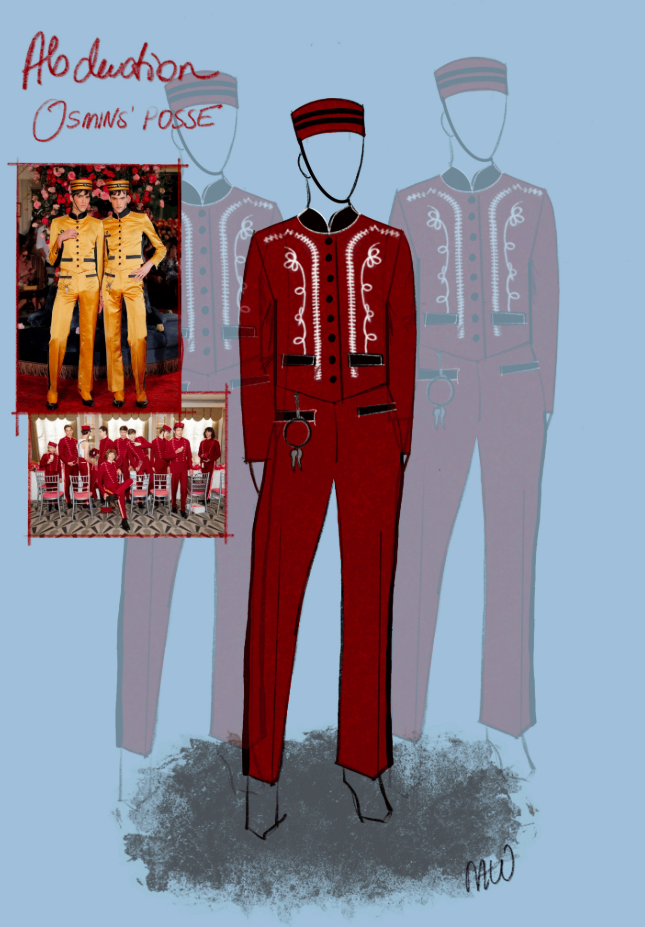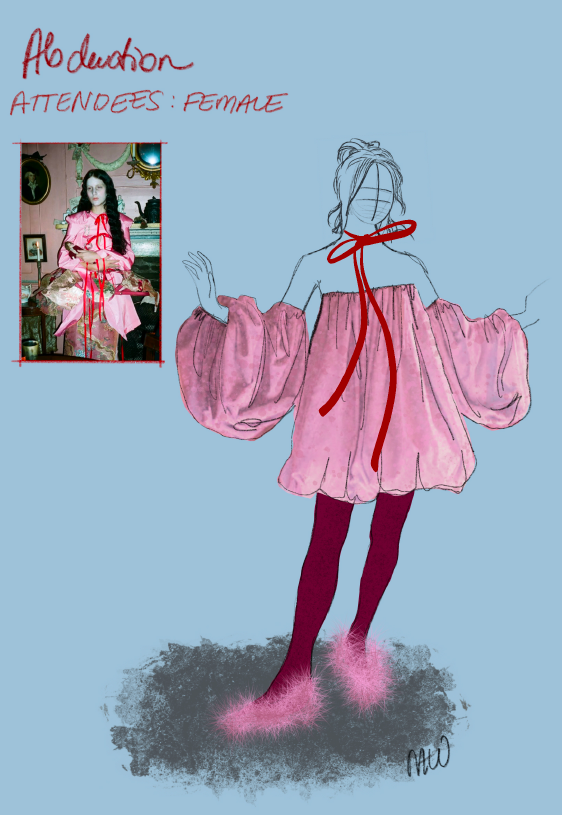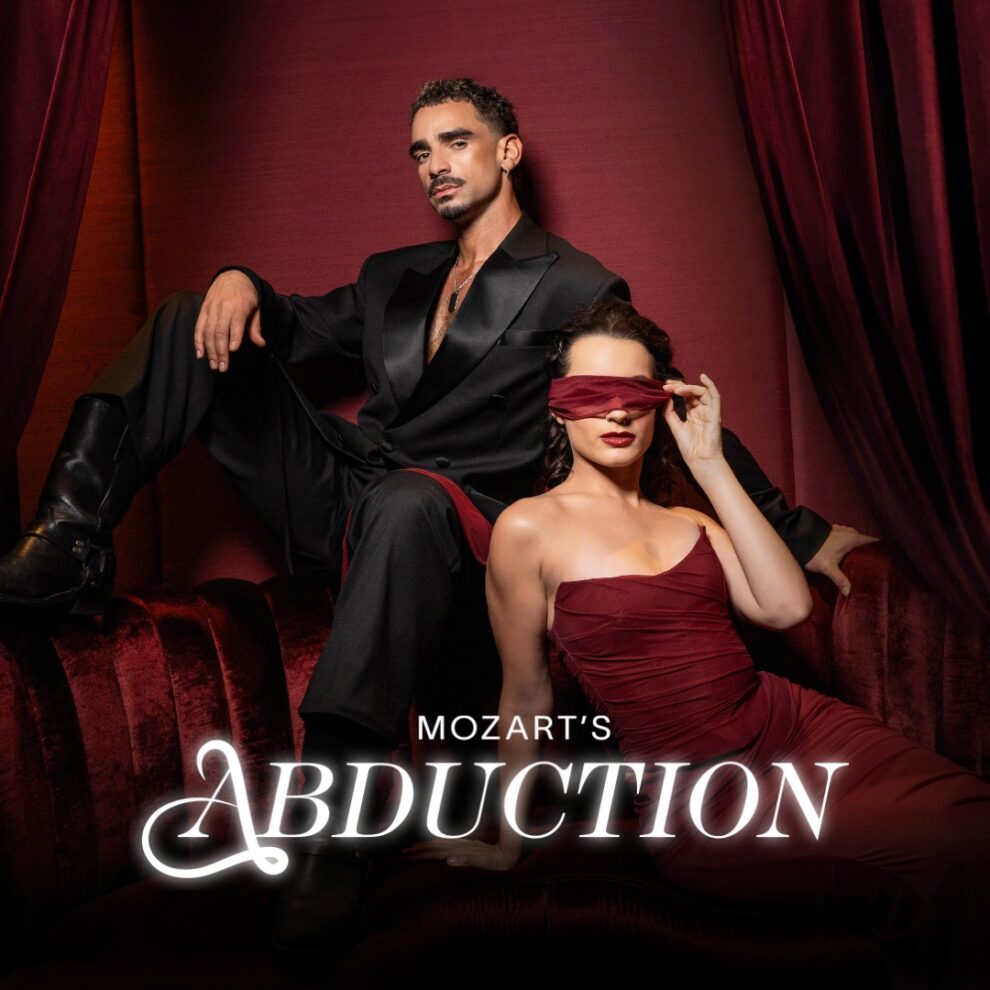
From Lady Gaga to Saltburn: the inspirations behind Abduction’s designs
As we prepare to premiere our new mainstage production, Abduction, at the Palais Theatre in August, we interviewed Matilda Woodroofe and Nathan Burmeister about their playful, sensual designs.
With leather chaps, gold braids, cowboy hats, thigh-high boots and velvet for days, the design for Abduction, our adaptation of Mozart’s The Abduction from the Seraglio, is a masterpiece in its own right.
In this interview, set and costume designers Matilda Woodroofe and Nathan Burmeister reveal the iconic pop culture moments, fashion runways and artists who inspired them. They describe navigating the challenges unique to opera, compared to other theatrical works.
And they name their favourite costumes. Nathan’s favourite, for instance, is the lead henchman Osmin: “a sexually ambiguous, highly flirtatious cowboy MC with a homoerotic fashion sense”. We love to see it.

Where did you seek inspiration for the Abduction designs?
Matilda and Nathan: From a very early stage, director Constantine Costi welcomed and encouraged a lot of dialogue regarding what direction to take the show. After reading the script and listening to the music, we agreed it was crucial to update the show with a contemporary and progressive lens.
We spoke a lot about the power structures within the different groups and pairings of characters, and how changing the leaders and hierarchy affected the design.
We discussed the allure and seduction of cults and cult leaders, bouncing around references such as Midsommer and Once Upon A Time In Hollywood. We spoke about the maximalism and overtness of movies like Saltburn and Mulholland Drive. The classical painting The Garden of Earthly Delight by Hieronymus Bosch brought in a classical grandeur and deeply absurd reference point.
There are also pop culture references in the design’s textural qualities and stylings. These have come from Lady Gaga’s Mayhem Ball, as well as a very silly, while exceedingly impressive, costume maker/personality/artist called Greedy Peasant – a self-described “Queer Medieval Fever Dream”.
We have always talked about incorporating design elements of glitzy, old-school Hollywood glamour with a fun, frivolous camp quality, but mixed with dark and dangerous undertones that’s equally enticing and thrilling.

Do you have a favourite costume?
Matilda: I love the bellhop costumes. They feel very Wes Anderson inspired and have this strange mix of heightened glam and henchman comedy. It seems very over the top and nostalgic of a past era. There’s something subversive about the conservative, inconspicuous nature of a bellboy uniform being made, by us, out of bright red, sexy, shiny satin with a garish gold, western-inspired braid down the fronts.
Nathan: My favourite would be Osmin’s costume. Redesigning the lead henchman into a flirty and over-the-top cowboy MC of the club is ridiculously fun. It’s entirely over the top: a sexually ambiguous, highly flirtatious cowboy MC with a homoerotic fashion sense (see: leather chaps) controlling the house of pleasure under the Pasha’s instructions. What’s not to love?
What do you hope people will take away or remember about the designs for Abduction?
Matilda and Nathan: We hope they remember the fun, the grandeur, the lusciousness, and the excitement of it. We hope they either get to see themselves reflected on stage or perhaps see an exciting world they might not usually think about.
Matilda, you worked with Marg Horwell on the costumes for Australia’s season of The Picture of Dorian Gray. How do you feel now Marg just won a Tony Award?
Matilda: It’s an amazing show to have been part of. I’m very proud of it and of Marg Horwell, the costume designer, to receive the success she deserves. It’s very inspiring for such a small group of Australian artists to have made such a special show that is having such an impact on a global stage.
The show really celebrates and revels in the art and tricks of theatre, a little like our show Abduction, with quick changes and set transitions, all enjoyed in full view of the audience.

What are some challenges you've faced in opera set design, and how did you overcome them?
Matilda and Nathan: A unique challenge in set designing for an opera is, well, the opera of it all. The performers are typically singing unassisted (without microphones) over a full orchestra, and this is a substantial acoustic consideration. There really aren’t many perfectly acoustic venues set up around the world, and when you add a large, over-the-top set and structure around the performers, it makes it harder again.
The sound needs to be able to bounce and resonate into the audience. The performers need to be able to hear the orchestra and hear themselves, and it all needs to balance and sit comfortably in the audience.
We have used a couple of tricks within the set design to assist this acoustic challenge. For example, even though we have lush, floor-to-ceiling curtains, which absorbs sound, we have placed solid walls behind them to help the sound bounce back into the auditorium.

What advice would you give budding designers looking to enter Australia’s theatre industry?
Matilda: It’s been a real delight getting to work with Nathan on this show and it’s a collaboration that has come about from sharing advice as younger, up-and-coming designers.
So, my advice is to be open and to ask for help and advice when you need it. Make as many connections with other designers, directors, writers – anyone in the industry – as possible. It’s nice to be able to share collective knowledge. Someone has always faced a similar problem before, or has some great advice drawn from their own experience.
Designing can be quite a solitary job with a lot of time spent by yourself and with your own ideas. It’s lovely to have someone to bounce off of, and to build on your ideas.
Read more:
- How Mozart’s pioneering sex comedy altered opera history
- Mozart’s opera was made for ‘superhuman’ voices
Donate to Victorian Opera’s Sketch to Stage campaign to turn these designs into a reality. Help us invest in emerging artisans and play a role in their professional development.
Anthea Batsakis, Content Editor
